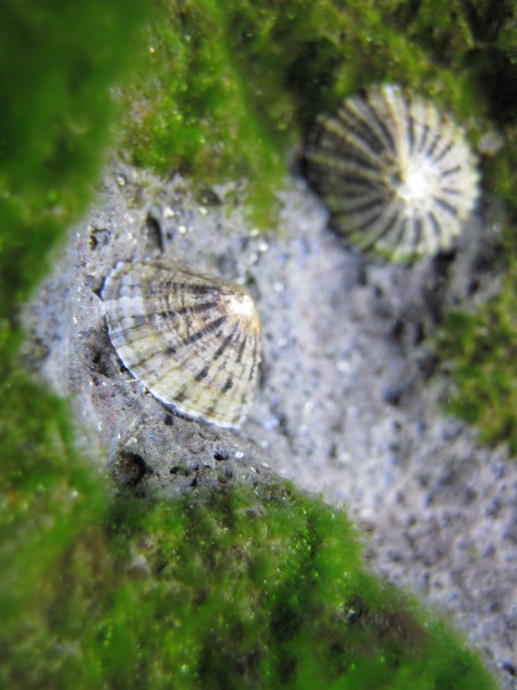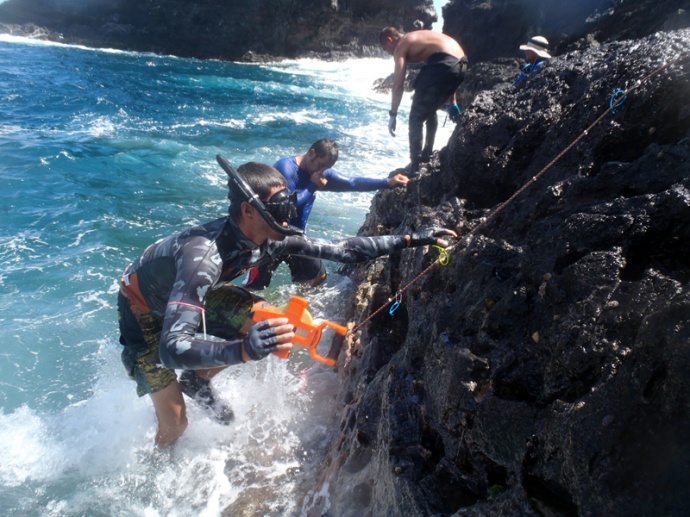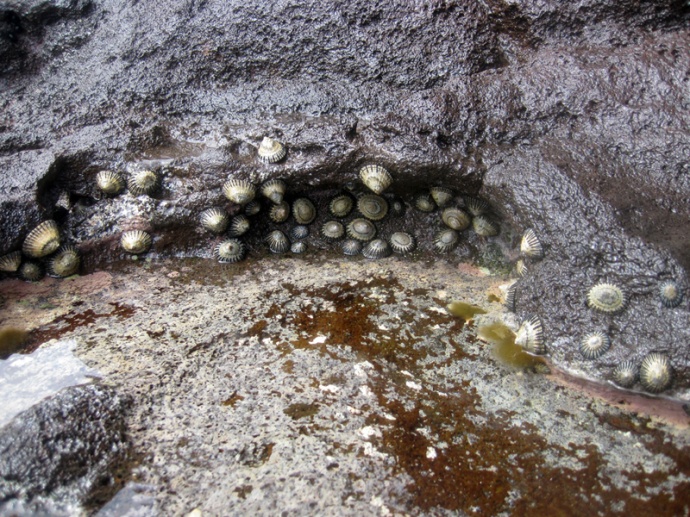‘Opihi Research at Papahānaumokuākea Yields Reproductive News
By Maui Now Staff
*** Supporting information courtesy: Papahānaumokuākea Marine National Monument and UNESCO World Heritage Site.
Researchers say preliminary evidence reveals that female ‘opihi or limpets live higher on the rocky shore than their male counterparts.
The findings were unveiled today by scientists who returned from a 12-day research trip to the Papahānaumokuākea Marine National Monument in the Northwestern Hawaiian Islands.
Dr. Chris Bird, a scientist from Texas A&M University, called the finding a “groundbreaking discovery,” saying the information “will contribute toward better understanding of ‘opihi reproduction, which will help marine managers when considering restoration of ‘opihi habitat in populated areas like O‘ahu.”

New information is gathered on ‘opihi (limpet) spawning activity in the Northwestern Hawaiian Islands. Courtesy Photo.
Dr. Bird was among the researchers on the fourth annual expedition in which scientists studied the monument’s intertidal zones, or shoreline area that is above water at low tide and underwater at high tide.
The research was conducted on the rocky shorelines of Nihoa Island, Mokumanamana Island, and French Frigate Shoals.
This mission is part of a five-year partnership among scientists, cultural researchers and community members to study the rocky intertidal zones of the remote and main Hawaiian islands.
“The importance of this work is to gain new information on this iconic food species to better manage fisheries across the archipelago,” said Hoku Johnson, NOAA’s coordinator of the expedition in a media statement today.
The research included data collection on ʻopihi spawning behavior, algae collection, and DNA analysis of invertebrates.
The team also conducted studies utilizing a native Hawaiian base as a paradigm. This included documenting observations of weather and animal interactions to gain further information on atmospheric and seasonal cycles.

Preliminary evidence reveals that female ‘opihi live higher on the rocky shore than male ‘opihi. Researchers say the findings will help in restoration efforts of ‘opihi habitats in populated areas like O‘ahu. Courtesy photo.
“Through recording everything daily about the weather, our surroundings, animal interactions and weather movements across the atolls and islands, we were able to connect further with our kūpuna and gain insight into the importance of being humble and totally aware of our surroundings,” said Shauna Kehaunani Springer, a cultural researcher from Hawai‘i Island.
Officials from the Papahānaumokuākea Marine National Monument and UNESCO World Heritage Site spoke of the historical importance of the shorelines noting that while the men fished out at sea, native Hawaiian women negotiated the intertidal zone to gather ʻopihi and ha‘uke‘uke or helmet urchin.

Preliminary evidence reveals that female ‘opihi live higher on the rocky shore than male ‘opihi. Researchers say the findings will help in restoration efforts of ‘opihi habitat in populated areas like O‘ahu. Courtesy photo.
The flesh of the species was used for food, while their shells were used as tools for scraping kalo and niu, and imprinting kapa cloth. In reverence to this native Hawaiian connection, researchers reportedly offered chants and small gifts of water and salt prior to conducting their research activities.
The team also explored a hypothesis that ‘opihi in the Northwestern Hawaiian Islands are bigger when they reach reproductive readiness than those in the main Hawaiian islands. Under this scenario, researchers say it could be indicative that increased pressure from fisheries forces them to reproduce at an earlier, and thus smaller, life stage.
The monitoring team included participants from: NOAA, Texas A&M University, the Scripps Institute of Oceanography, The Nature Conservancy, Nā Maka o Papahānaumokuākea, Conservation International-Hawaii Fish Trust, Kaho‘olawe Island Reserve Commission, Kalapana Fishing Council, Nā Mamo o Muole‘a and Kipahulu ‘Ohana.










